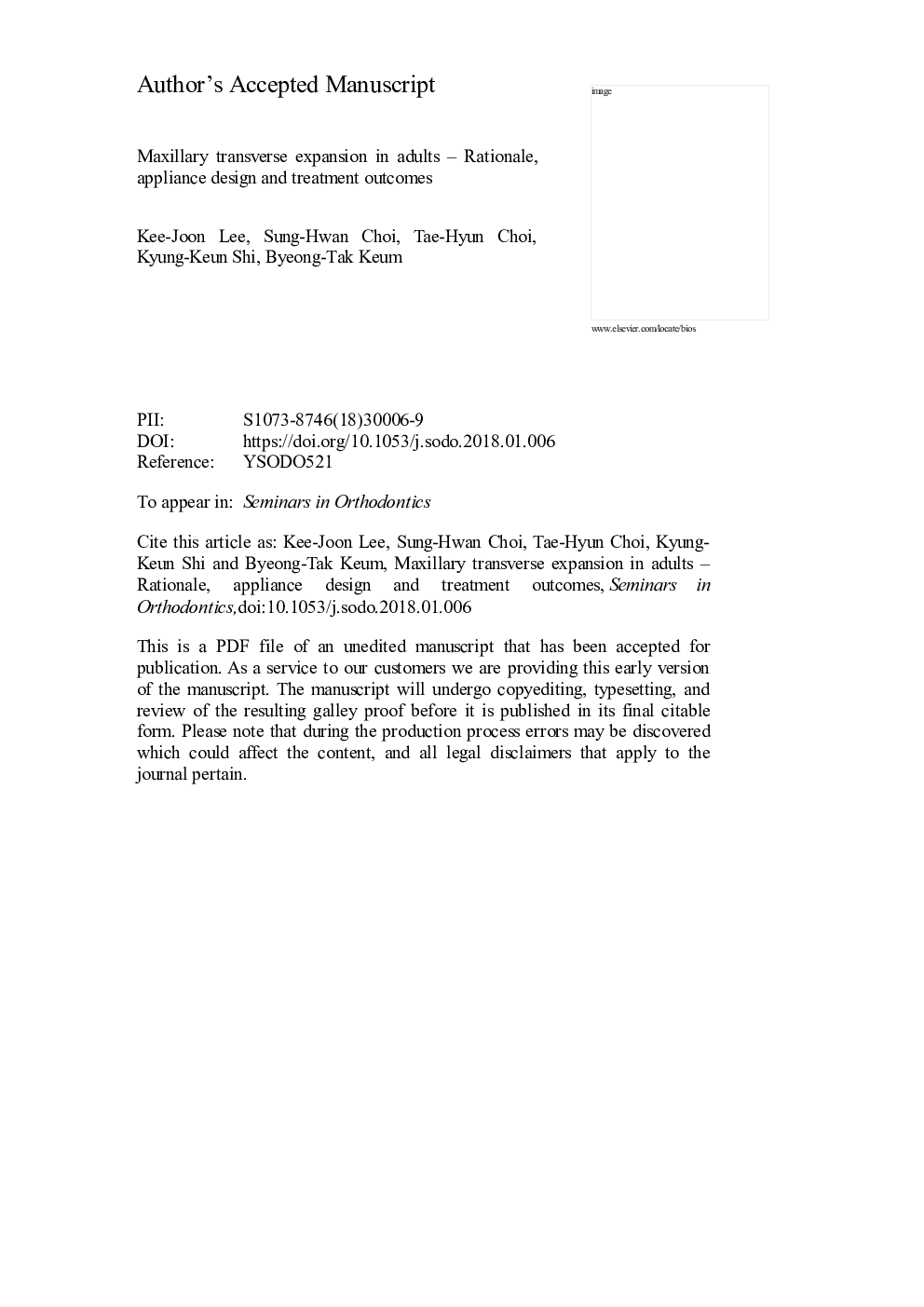| Article ID | Journal | Published Year | Pages | File Type |
|---|---|---|---|---|
| 8708858 | Seminars in Orthodontics | 2018 | 23 Pages |
Abstract
Balanced transverse relationship between maxillary and mandibular dentition is a prerequisite for establishment of normal occlusion regardless of patient's age. In particular, considering the high prevalence among adults, maxillary transverse deficiency does not appear to be diagnosed or treated properly possibly due to the lack of diagnostic measures and treatment modality. A center-of-resistance perspective of the transverse dimension may be helpful for the clinicians to understand the pattern and severity of discrepancy. In terms of treatment, non-surgical expansion of the maxillary basal bone may be facilitated based on the understanding on the complexity of the circummaxillary structure and the stress distribution pattern. According to our experimental outcomes and clinical trials, a combined tooth-and-bone-borne maxillary expander, i.e., miniscrew-assisted rapid palatal expander (MARPE), has been introduced. The rationale of appliance design and clinical outcomes including the stability of the maxillary expansion are to be explained in the present article. Under proper manipulation of the expander, non-extraction and/or non-surgical camouflage of various skeletal discrepancies can be encouraged. Radical transverse correction in surgical cases may also reduce the need for extraction or additional surgery. Overall, it can be concluded that the non-surgical palatal expansion in young adults can be a useful modality exhibiting high success rate of suture separation and clinically acceptable stability following expansion.
Related Topics
Health Sciences
Medicine and Dentistry
Dentistry, Oral Surgery and Medicine
Authors
Kee-Joon Lee, Sung-Hwan Choi, Tae-Hyun Choi, Kyung-Keun Shi, Byeong-Tak Keum,
